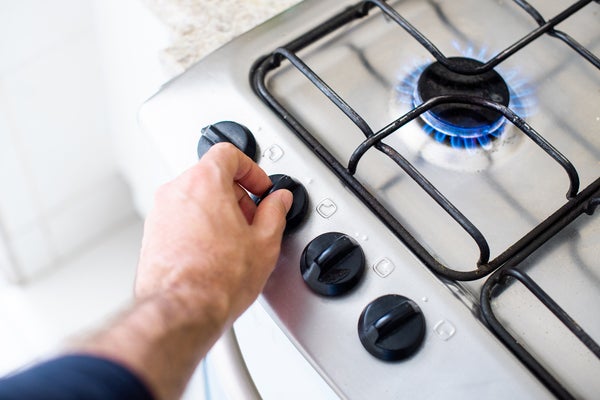Gas Stove Pollution Lingers in Homes for Hours Even outside the Kitchen
Gas stoves spew nitrogen dioxide at levels that frequently exceed those that are deemed safe by health organizations
Nearly 40 percent of U.S. homes have gas stoves, which spew a host of compounds that are harmful to breathe, such as carbon monoxide, particulate matter, benzenes and high quantities of nitrogen dioxide.
Decades of well-established research have linked nitrogen dioxide, or NO2, to respiratory conditions such as asthma and chronic obstructive pulmonary disease, which especially affect children and older adults. This harmful link is so well established that some states have begun banning gas appliances in new construction. And now a new study has shown in stark detail just how long and far this gas spreads and lingers in a home. By sampling homes across the U.S., the researchers found that in many, levels of exposure to NO2 can soar above the World Health Organization’s one-hour exposure limit for multiple hours—even in the bedroom that is farthest from the kitchen.
“The concentrations [of NO2] we measured from stoves led to dangerous levels down the hall in bedrooms … and they stayed elevated for hours at a time. That was the biggest surprise for me,” says Rob Jackson, a sustainability researcher at Stanford University and senior author of the study, which was published on May 3 in Science Advances.
On supporting science journalism
If you’re enjoying this article, consider supporting our award-winning journalism by subscribing. By purchasing a subscription you are helping to ensure the future of impactful stories about the discoveries and ideas shaping our world today.
The researchers collected real-world data on NO2 concentrations before, during and for several hours after the use of gas and propane stoves in houses and apartments in California, Colorado, Texas, New York State and Washington, D.C. In six homes, they tested the levels of NO2 in the bedroom…
Read the full article here







